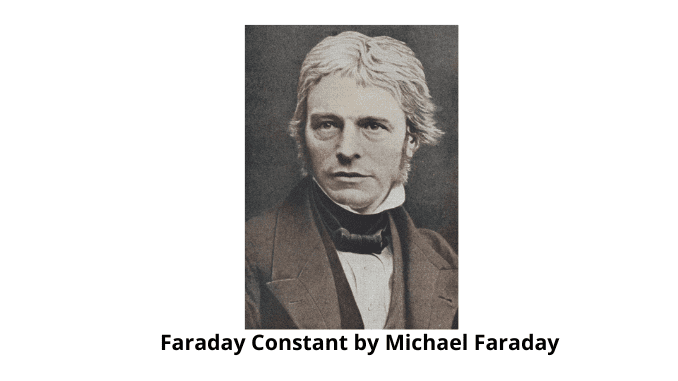
Faraday Constant definition
Definition of Faraday constant is the amount of electric charge carried by one mole or Avogadro’s number of electrons. Faraday constant is denoted by ‘F’. This constant was named after Michael Faraday. The most common use of this Faraday constant has been made in the electrolysis.
Faraday constant formula
F= eNA = F= 96485 c mol-1
Where, F= Faraday Constant
E = It is the charge of the electron in coulombs = 1.602176634 X 10-19 C
NA is the Avogadro’s constant = 6.02214086 X 1023 mol-1
What is Avogadro’s constant
Avogadro’s number is the number of units in one mole of a substance. This number is also called the Avogadro constant. The value of Avogadro’s constant is 6.02214086 X 1023 mol-1
Faraday’s constant in Joules
Faraday’s constant value can be expressed by using this unit
F= 96485 Joule per volt gram equivalent
How to use Faraday’s constant
One of the most common use is in electrolysis calculation. Dividing the amount of charge in coulombs by Faraday’s constant gives the amount in moles of elements that have been oxidized.
How Faraday’s constant is a universal constant?
Faraday represents the amount of electric charge carried by one mole or Avogadro’s number of electrons. It can be derived by dividing Avogadro’s constant or the number of electrons per mole by the number of electrons per coulomb.
We can see when it is derived it does not depend upon any such factors. So it is not changed at any time. That is why it is a universal constant.
Write the equivalent value of this constant in another unit in table form
| Equivalent value | Units |
| 96485.33289 | Coulombs per mol (C mol-1) |
| 96485 | Joule per volt gram equivalent J/V |
| 23.061 | Kcal per volt gram equivalent (Kcal/v) |
| 26.801 | A.h/mol |
Applications of Faraday constant
Faraday’s constant represents the amount of electric charge carried by one mole of electrons. This charge is usually used in electrochemistry for electrolysis calculation. This constant is used in chemistry and physics also.
Dividing the amount of charge in Coulombs by the Faraday constant gives the amount in moles of elements that have been oxidized. Also used across understanding the oxygen flow rate and charge transfer etc.
Q&A
1. What is Faraday constant?
It is the amount of electric charge carried by one mole or Avogadro’s number of electrons. It is denoted by “F”.
2. What is the value of the Faraday constant
96,485 c/mol which is 1 F corresponding to the amount of electricity that is carried by 1 mol of electrons.
3. What is Faraday’s constant in chemistry?
Is the total electric charge carried by Avogardo’s number
Therefore, F= eNA
= {(1.602 X 10-19) X (6.022 X 1022)}
= 9648 C mol-1
Where, e = The charge of the electron in Coulombs
NA = It is the Avogadro Constant
So, we can easily calculate Faraday’s constant by multiplying the charge of an electron by the Avogadro constant.
